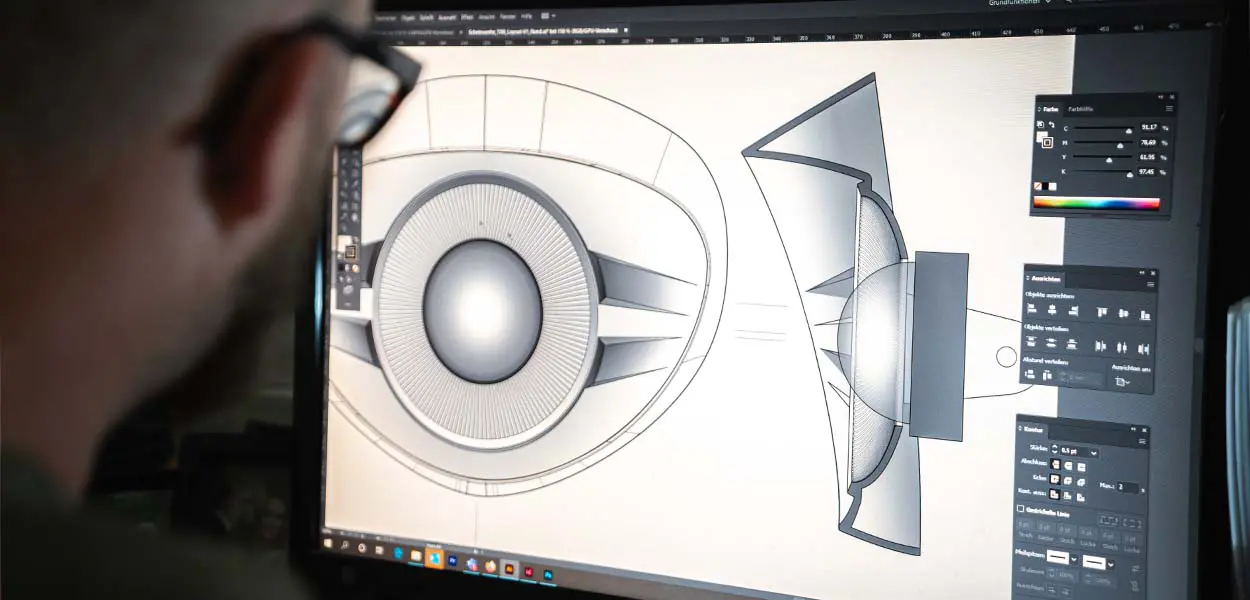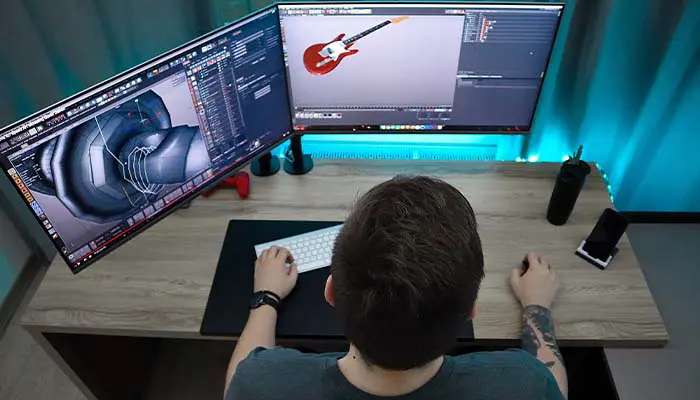Generative Design - PerfectionGeeks
What is Generative Design?
March 13, 2023 02:59 PM
Generative Design - PerfectionGeeks
March 13, 2023 02:59 PM

Generative design is a form of design exploration that makes use of AI to generate a vast array of options and ideas to solve complex issues. However, does this mean that people don't need to create? Do you think AI will become the dominant force in the world of design in the way we are currently used to? Let's find out.
It makes use of the potential of AI to produce advanced and high-performance design variations that aid in solving complicated problems, like cutting down on component weight, improving performance, or making design simpler.
At first, it may appear as if it's only for use by engineers. However, it's not. Artificial intelligence in design is a phenomenon that has taken numerous creativity-related industries by storm.
However, don't worry; there's no need for matrix PTSD, and there's no feeling like machine learning has taken over our jobs as designers. We'll tell the reader what generative design actually is, where it could be used, and (a sigh of relief) the limitations it has.
To better understand why this is the case, think about this: Let's say that you wish to build an arena. However, you must consider two opposing ideas: You want to draw a large number of people into your venue, but you would also like everyone to enjoy a great view of the game.
To better understand why this is the case, consider this: Let's say that you wish to build the stadium. However, you must consider two opposing ideas: You want to draw a large number of people to the stadium, but you would like everyone to enjoy a great view of the game.
With the help of a generative system, it is possible to put these two concepts to work to come up with an AI solution in a way you may not have thought of or considered before.
If you're wondering, "When will I build an arena or stadium?' Let's take a look at a more concrete scenario. If you're looking for the countertop to be tiled, that is an irregular shape. You're trying to figure out the ideal design and shape of your tiles so that you can reduce the amount of waste. This is where generative design can assist.
Airbus, the most well-known aircraft manufacturer, is employing the generative design process to redesign an interior partition in Airbus' A320 airplane.
Utilizing the capabilities of generative design software, they created the solution that eventually reduced about 45% of the piece's weight, which is equivalent to around 30kg. The weight reduction will mean that the aircraft consumes less fuel. This will decrease emissions from the air transportation industry in general. The reduction of 30 kilograms per aircraft across the entire fleet is equivalent to eliminating the emissions of 96,000 cars that travel each year.
For the mission to be completed, it is necessary for the lander to perform its mission in temperatures that are far below freezing and be able to withstand radiation levels that are thousands of times higher than what we encounter on Earth. Utilizing software that generates design, Nasa and Autodesk came up with an innovative design solution that works very well in all of these challenging project parameters. It's something that an engineer may not have been capable of imagining at all, or within the same timeframe.
Autodesk is among the top generative software companies worldwide, and they're not only leading the way in the application of generative design within the field of space. Consider the automotive industry as an example.
In the last Autodesk University event, the Design & Manufacturing Keynote centered on "Elevate." The concept was developed by Hyundai, which is using the generative design technique to create a vehicle that is designed with the capability to "walk." It's true. A vehicle that is able to switch between driving and "walking" functions to reach places that were not thought possible before.
Although generative design applications help visualize complex design ideas, 3-D printing provides the best technique to help bring intricate designs to life.
Paradoxically, generative design algorithms often create highly organic shapes that are essential for particular types of performance-sensitive applications.
They are usually impossible to manufacture using traditional manufacturing techniques like injection molding. However, additive printing as well as 3D printing have opened the doors wide.
If you consider it, 3D modeling is an ideal match. Engineering PB&J Generative Design offers users of the 3D industry fast and flexible methods of creating high-resolution 3D models that are three-dimensional. many design variations for an affordable final product.
The internal lattice of this outsole created by New Balance is a perfect illustration of how organic designs that are generative can look.
The additive printing process and 3D printing played a significant part in the development of generative manufacturing technologies across industries.
But, it is false to say that generative design can be limited to 3D printing only. Most of the time, it is the most efficient manufacturing technique. In some instances, it is possible to employ more traditional manufacturing techniques such as casting, CNC machining, or injection molding along with additive manufacturing.

One example is that we can do simultaneous exploration.
The way generative design functions is that the creator sets and inputs all requirements for the design of the part according to parameters such as size, weight, material cost, strength, and manufacturing processes.
The software for generative design uses algorithms to investigate possible possibilities for these variables and produce hundreds of design possibilities. The AI-powered software will evaluate each design and decide which ones are the most efficient.
And then, of course, we also have the speed of design. The traditional design process can sometimes be similar to a game of battleship. You may try H3, and you could have a hit or miss. You then go back to try. With the generative design method, you are able to test all options simultaneously. Businesses can utilize the power of generative design to gain a competitive edge in speeding product development.
There is also "size optimization" in that sense, which is about finding the form that is most effective and cost-effective while still achieving a certain rule set.
Once the shape has been established, topology optimization then becomes focused on the number of components connected to or fitting into the shape.
However, even after having defined the terms, topology optimization and generative design could still seem similar. However, the distinction lies in the general process.
Optimization of topology begins with a completely human-designed design, which is constructed by analyzing the specified loads and constraints. The model is then able to produce an optimized idea to be evaluated, built on the concept of a human. There is no automatic ideation.
This is how it is different from the process of generative design. It begins by putting in the constraints, which are later analyzed by an AI to identify hundreds or thousands of topological ideas.
But the numbers aren't the only thing that distinguishes the two methods. What topology optimization does not take into account is the fact that any design created by traditional methods is inherently biased.
In generative design, the AI is not influenced by biases (at least, not in the same way) and will explore far beyond the limits of what we could imagine. We need to be sure that the shortcuts we have created or our preconceptions aren't hard-coded into the AI technology.
In the beginning, it is important to be aware that generative design isn't an entirely new phenomenon. It has been used by people since the 1990s. But it was never able to reach the degree of popularity and applications across different fields that it does in the present. The simple answer is "no.”
In all likelihood, the concept of generative design is an attractive possibility. Instead of having a designer work hard to create a few ideas, you can employ an algorithm that can quickly create thousands of possible designs and then request the designer choose the most appealing.
The designer moves from being one of the designers to becoming an editor. What's not to love? Actually, there are a couple of issues.
If you are using design generatively, there's no algorithm that has been developed to generate all design possibilities. Designers must develop their own algorithm from scratch, which isn't an easy task.
Comparing the numerous, numerous choices that the system offers is another problem. It requires a highly experienced person to be able to do this, as well as complicating issues; people hate having too many options. We're confronted with a "paradox of choice" here. We have more choices, which means we have more chances to make the wrong choice, which is what we are afraid of.
It's true that designers (and the general public) do not work this way.
Generative design is helping major companies, like Airbus, overcome huge engineering issues. AI is now the most common practice, and generative design is likely to be the primary method of designing in the near future. More efficiency and less waste. Get a free, instant quote from us today.
Even with its effectiveness, however, it won't substitute for the designer's work in the same way that it can't replace the knowledge and expertise of professionals in the fields of architecture or mechanical engineering. There will be no doubt that the process of design generation will be vital. Although generative design has many great benefits, it may not be the best solution for all projects.
Strategy
Design
Blockchain Solution
Development
Launching
Testing
Maintenance
Contact US!

Plot 378-379, Udyog Vihar Phase 4 Rd, near nokia building, Electronic City, Phase IV, Sector 19, Gurugram, Haryana 122015
Copyright © 2025 PerfectionGeeks Technologies | All Rights Reserved | Policy
Contact US!

Plot 378-379, Udyog Vihar Phase 4 Rd, near nokia building, Electronic City, Phase IV, Sector 19, Gurugram, Haryana 122015
Copyright © 2025 PerfectionGeeks Technologies | All Rights Reserved | Policy